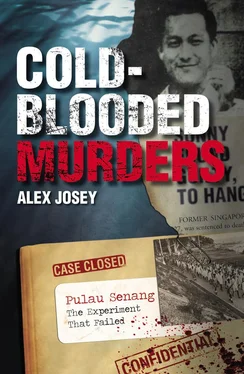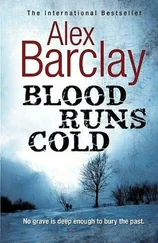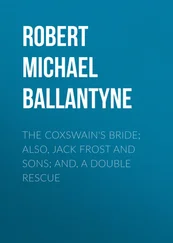Alex Josey - Cold blooded murders
Здесь есть возможность читать онлайн «Alex Josey - Cold blooded murders» весь текст электронной книги совершенно бесплатно (целиком полную версию без сокращений). В некоторых случаях можно слушать аудио, скачать через торрент в формате fb2 и присутствует краткое содержание. Жанр: Криминальный детектив, на английском языке. Описание произведения, (предисловие) а так же отзывы посетителей доступны на портале библиотеки ЛибКат.
- Название:Cold blooded murders
- Автор:
- Жанр:
- Год:неизвестен
- ISBN:нет данных
- Рейтинг книги:5 / 5. Голосов: 1
-
Избранное:Добавить в избранное
- Отзывы:
-
Ваша оценка:
- 100
- 1
- 2
- 3
- 4
- 5
Cold blooded murders: краткое содержание, описание и аннотация
Предлагаем к чтению аннотацию, описание, краткое содержание или предисловие (зависит от того, что написал сам автор книги «Cold blooded murders»). Если вы не нашли необходимую информацию о книге — напишите в комментариях, мы постараемся отыскать её.
Cold blooded murders — читать онлайн бесплатно полную книгу (весь текст) целиком
Ниже представлен текст книги, разбитый по страницам. Система сохранения места последней прочитанной страницы, позволяет с удобством читать онлайн бесплатно книгу «Cold blooded murders», без необходимости каждый раз заново искать на чём Вы остановились. Поставьте закладку, и сможете в любой момент перейти на страницу, на которой закончили чтение.
Интервал:
Закладка:
Alex Josey
Cold blooded murders
THE PERFECT CRIME
Pulau Dua or the Sisters Islands
Pulau Dua are two little islands separated by a straits, about 700 feet apart. The straits vary in depth between 30 and 35 feet.
“The islands are about four miles from Jardine Steps in Singapore Harbour and they are among the southernmost islands of the Southern Islands, beyond which stretches the open seas, with Indonesia in the distance.
… the waters are extremely hazardous. They are dangerous because of the remarkable eddies and swirls which occur there, and the speed of the current around the islands varies with the speed of the tides from half a knot to some four knots.”
— Crown Counsel
Verdict
“Members of the jury, have you agreed upon your verdict?”
“Yes.”
“What is your verdict?”
“Guilty.”
“Is that unanimous or by a majority?”
“It is unanimous.”
Justice Buttrose addressed the young man in the dock, “Ang, the jury have by a unanimous verdict found you guilty of this crime of murder, and I accordingly convict you.” The judge turned to counsel. “Do either of you wish to address me?”
“No, my Lord.”
Justice Buttrose said, “Ang you have been convicted by the unanimous verdict of the jury of a terrible crime. You killed this young girl Jenny, whose only fault apparently was that she had the misfortune to fall in love with you, and to give you everything she possessed: her all. You killed her for personal gain. It is a crime cunningly contrived to give the appearance of an accident, and it was carried out with consummate coolness and nerve. At long last the time has come for you to pay the penalty for your dreadful deed.”
Ang showed no emotion. The faint smile, which had been on his thin lips through most of the 13 days’ trial, was still there as the judge sentenced him to death. Outside the courtroom, his law-student sister, Juliet Ang, broke down and cried.
August 1963 was a month of intense political activity in the tropical island-state of Singapore. Strong feeling had also been aroused by the discovery, by workmen digging foundations, of human bones, further proof of Japanese military atrocities during the Second World War. Most of Singapore’s population of some two million are of Chinese origin: they suffered considerably during the Japanese occupation. Politically, Singapore (lying at the foot of the Malay Peninsula, an island of some 225 square miles, most of the equatorial swamps and jungle turned into modern roads, and industrial sites and commercial centres) was fast moving into complete independence through merger with Malaya and the creation of Malaysia. This experiment in multiracialism regrettably failed when Singapore was separated from Malaysia almost exactly two years later.
In August 1963, Singapore papers were full of the sensational case in England involving Christine Keeler and a British Cabinet Minister. In Moscow, leaders of the United States and the Soviet Union drank champagne after signing the test-ban treaty. Sir Alec Home, the British Prime Minister, said that the world had become a safer place.
In Washington, President Kennedy’s two-day-old son died in hospital. Monks in Vietnam burnt themselves to death. In Britain, the Great Train Robbery of more than?2.5 million thrilled the world. In Kuala Lumpur, capital of Malaysia (connected to Singapore by a mile-long causeway), a Member of Parliament accused the Minister of Education, Abdul Rahim bin Haji Talib, of corruption. “Say that outside,” demanded the Minister. Obligingly, the Member did. The Minister took him to Court, and lost.
Lord Nuffield died, and ended an era. There was a drought in Singapore, where 71 secret society gangsters were charged with murder during a. riot at an open prison on a nearby isle, Pulau Senang, the previous month. Eighteen were later hanged.
During much of August 1963, Singapore was preparing for Malaysia Day, the last day of the month when the creation of Malaysia would be celebrated. Indonesia, just across the waters, was already objecting, and Tunku Abdul Rahman, then Malaya’s Prime Minister, had flown to Manila to talk to President Sukarno and President Macapagal. Agreement was reached that the United Nations be asked to satisfy themselves (which they did) that the Borneo states of Sabah and Sarawak in fact wanted to become part of Malaysia. At these talks Sukarno described the Tunku as ‘a great statesman’, and Macapagal ‘a great leader of Asia’. For his part, the Tunku was prepared to admit that Sukarno and Macapagal were both ‘dynamic leaders who have fought colonialism and imperialism’. Within days the agreement completely collapsed. After abandoning the United Nations, Sukarno spent much of the following three years trying to smash Malaysia.
On Sunday, 25 August 1963, 100,000 people assembled on the grassy padang in front of Singapore’s City Hall, next to the Courts, to demand that Japan pay SGD$50 million as a gesture of atonement for their war atrocities to civilians during the occupation. During that month of August feelings were running high for many reasons. Political tension was apparent. Communist elements were trying to exploit every issue they thought could be distorted to embarrass the government: they did all they could to frighten, confuse and threaten the people over Singapore’s impending merger with Malaysia.
Against this excited and troubled background, a news item in The Straits Times headed ‘Barmaid out diving with boyfriend disappears’ aroused no more than casual interest. Nobody knew then that nearly two years later, this Tuesday afternoon swimming tragedy was to form the substance of one of the most remarkable murder trials ever heard in the Far East. The Straits Times report, obtained from the police, read as follows; A barmaid, Cheok Cheng Kid, 22, went skin-diving with her boyfriend off Pulau Dua at 2:30 pm yesterday. Three hours later she vanished in the sea. Until late today Marine Police launches were searching the sea off the island but found no trace of Cheok’s body. Cheok had hired a motor sampan with Sunny Ang, 24, part-time law student, at Jardine Steps yesterday afternoon. About 3:00 pm they reached Pulau Dua near St John’s Island. They fitted on their goggles, mouthpiece, flippers and compressed air cylinders and dived from the sampan in turns in search of coral. After several dives they took off their gear and rested for a little while. They then decided to start diving again. While Mr Ang was fitting on his gear, Cheok plunged into the water. Mr Ang found a break in his breathing apparatus and asked the boatman to help him repair it. When he failed to repair the leak he signalled Cheok to surface. He tugged at her lifeline several times until it snapped before he gave up and rushed to nearby St John’s Island to report to the Marine Police. The police, helped by five islanders, rushed to the scene and dived several times in search of Cheok, but found no traces of her. Cheok lived at Tanglin Halt and worked in a bar in North Bridge Road. Mr Ang told the police that he had been going steady with her for the past six months. Their favourite hobby was skin-diving and they had gone to Pulau Dua several times before.
Neither the police, nor The Straits Times, were then to know that this report was inaccurate in several instances. ‘They’ did not fit on their goggles, etc. Only Cheok fitted on diving gear. ‘They’ did not dive from the sampan in turns. Only Cheok dived. And she dived twice. She was never seen again. Ang did not get even his feet wet that day. He did not dive in search of her (though one of the Malays who did was 62 years old), when Cheok did not surface. Cheok no longer worked as a barmaid. Ang had not been going steady with her for six months. He had only known her three months. They had never before been skin-diving together at Pulau Dua, a notoriously dangerous area for swimmers. Not until the trial was the importance of these discrepancies to be revealed. According to the prosecution, this was the story of ‘the accident’, which Ang had carefully concocted and thought would be believed. It might have been, and Ang might today be a free man, had he not been greedy.
Читать дальшеИнтервал:
Закладка:
Похожие книги на «Cold blooded murders»
Представляем Вашему вниманию похожие книги на «Cold blooded murders» списком для выбора. Мы отобрали схожую по названию и смыслу литературу в надежде предоставить читателям больше вариантов отыскать новые, интересные, ещё непрочитанные произведения.
Обсуждение, отзывы о книге «Cold blooded murders» и просто собственные мнения читателей. Оставьте ваши комментарии, напишите, что Вы думаете о произведении, его смысле или главных героях. Укажите что конкретно понравилось, а что нет, и почему Вы так считаете.












